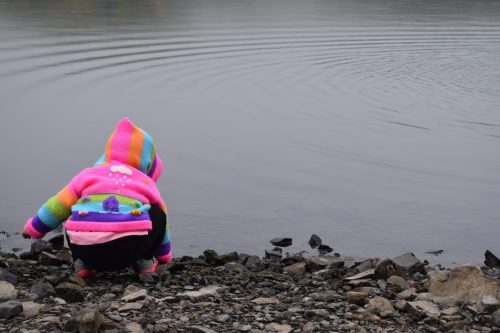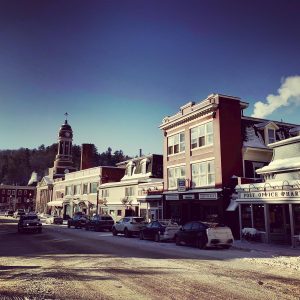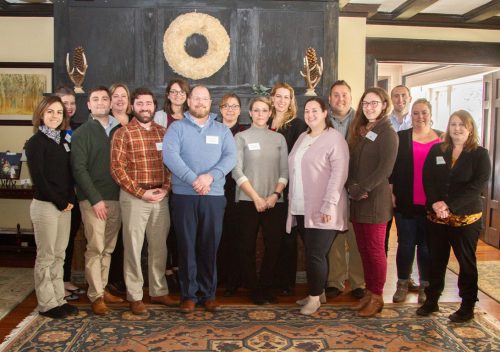 By Kate Fish, ANCA Executive Director
By Kate Fish, ANCA Executive Director
“One day a group of villagers was working in the fields by a river. Suddenly someone noticed a baby floating downstream. A woman rushed out and rescued the baby, brought it to shore and cared for it. During the next several days, more babies were found floating downstream, and the villagers rescued them as well. But before long there was a steady stream of babies floating downstream. Soon the whole village was involved in the many tasks of rescue work: pulling these poor children out of the stream, ensuring they were properly fed, clothed, and housed, and integrating them into the life of the village.
While not all the babies, now very numerous, could be saved, the villagers felt they were doing well to save as many as they did. Before long, however, the village became exhausted with all this rescue work. Some villagers suggested they go upstream to discover how all these babies were getting into the river in the first place.
A huge controversy erupted in the village. One group argued that every possible hand was needed to save the babies since they were barely keeping up with the current flow. The other group argued that if they found out how those babies were getting into the water further upstream, they could repair the situation up there that would save all the babies and eliminate the need for those costly rescue operations downstream.
“Don’t you see,” cried some, “if we find out how they’re getting in the river, we can stop the problem and no babies will drown? By going upstream we can eliminate the cause of the problem!” “But it’s too risky,” said the village elders. “It might fail. It’s not for us to change the system.”
This story really resonates at ANCA. It is at the heart of the spirited discussions we have at staff meetings and with our board. The two options are decidedly not the same. The first, while taking care of people at the margin, struggling communities and small businesses, does not address the underlying causes of the problems. The second, while fixing the system to produce a more level playing field, does nothing to address the immediate needs of people who are struggling now.
So, what are we doing? We are tackling both challenges by using what we learn from solving the short-term and immediate to change the way the system works. We also recognize that the first approach, for which systems of charity and social services have been developed, is far better funded in this society. 
School backpack programs (getting the babies out of the river) are easier to find funding for than changing the way the economy works for disadvantaged families (going upstream to stop the babies from falling into the river) so that fewer kids need weekend backpacks to meet their family’s food needs. Changing the system, which requires changing the way our systems and markets work, is far less understood and therefore harder to fund.
This dilemma and how we resolve it is at the heart of how we are roadmapping our work for the next five years.
ANCA is about to unveil our 2020-2025 Strategic Plan.
Our vision is simple — and huge: “A New Economy That Works For All.”
But who is ‘All’? It’s the people who live here who have been left out due to a history of an extractive economy that drained wealth out of the region and left low-value, vulnerable jobs. It’s the communities that have lost tax base, population, and Main Street businesses. It’s the farmers and young families who are showing up looking for a quality of life and welcoming communities that they can’t find in cities. It’s clean water and air, breathtaking landscapes and mountains and the abundance of wild things who share this place with us.
This New Economy needs to work for all of these.
Our mission is also simple — and huge: “Build prosperity across Northern New York.”
What is Prosperity? It evokes abundance, well-being, thriving, flourishing, growth and success. It is far bigger than just material wealth. It is about cultural richness, sharing spaces and resources, work that is rewarding, engaged citizenship, healthy quality of life.
Our big idea is also simple and huge, “Keeping wealth and value in local communities.”
How do we do that? It means that everything we do, every plan we come up with, every policy recommendation we make, has at its core the goal of keeping wealth local. With three sectors as our central focus — local food systems, clean energy and the entrepreneurial economy — our driving motives are to keep dollars in local communities and grow the number of people and businesses here that are flourishing.
What does it look like on the ground working both downstream and upstream? 
The Center for Businesses in Transition. This program is founded in data (over 10,000 small, baby-boomer-owned businesses are at risk of closure due to retirement in our region), grounded in day-to-day work with these businesses to determine what they need, and implemented by corralling the partners and expertise to make needed tools accessible and affordable for business owners and entrepreneurs. Within the past year, 88 small businesses are in transition, 42 entrepreneurs are looking at taking them over, and 98 partners and community liaisons are involved. We use the downstream information to inform or design the upstream system changes.
The farm-to-school program. Downstream work from farms to school lunch rooms led to informing policy that is changing the way school lunches are reimbursed by the state (upstream). Then back downstream again to identify and eliminate gaps in the production, and distribution to school food service systems. These programs also work by streamlining the system and helping producers get local food kids will like into school cafeterias.
ANCA’s Clean Energy Program. This program is founded in downstream/upstream coordination. Boots-on-the-ground work in North Country communities made it clear that municipal leadership would benefit from our support along several critical fronts. Inventing a program that earned funding and delivered that support (technical expertise and access to options and funding) has led to 195 communities engaged in clean energy projects, including 20 municipalities that received $1.4M in incentives, and nearly a megawatt of residential solar being installed. And, the State took our lead and built a statewide program that offers this kind of support.
These are just a few examples. Looking forward to 2025 and the opportunity-rich decade ahead, we are thinking big and using this upstream/downstream approach to grow a New Economy that works for All.
We believe that we can save our babies — our farms, small businesses and communities — in the short-term and stop them from falling into the river in the future.

Photo 1 by Alecia Follett
Photo 2: Main Street, Saranac Lake, NY
Photo 3: The Center for Businesses in Transition team: 2020 community liaisons and lead partners
Photo 4: A Watertown student enjoys locally grown sweet corn as part of the Drive for 25 Farm to School program.
